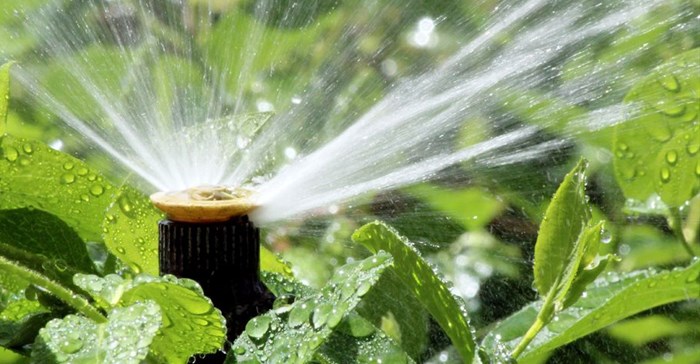
Top stories

Marketing & Media#BizTrends2026 | Rogerwilco's Charné Munien: Brands in the new age of answering machines
Charne Munien 15 hours





More news
















As the biggest user of fresh water, the agricultural sector accounts for 60% of the total annual water demand in the country. In view of its significant demand, agricultural and supply chain water management has been a key strategic work area of the SWPN-SA, a public-private-civil society sector partnership that aims to improve the future security of South Africa’s water since its inception in 2011.
The SWPN has supported projects such as the rollout of the Water Administration System (WAS), a water management tool for irrigation schemes to help manage their water usage, water distribution and water accounts. The initiative aims to minimise water losses on irrigation schemes that distribute water through canal networks. It has been rolled out in four irrigation schemes including Hartbeestpoort Irrigation Board, Vaalharts, Orange-Riet and Sand-Vet Water User Association. Preliminary results obtained for three of the four schemes supported, indicate a combined reduction in water losses of nearly one million cubic metres per week.
Irrigated agriculture plays a major role in food security in South Africa. According to AgriSA, only 12% of South Africa’s landmass is considered arable with just 3% being truly fertile. Astonishingly, only 1,5% of the land is under irrigation and this produces 30% of the country’s crops. Accordingly, creativity and innovation are essential to improving and sustaining food security without compromising or increasing the water demand emanating from this sector says the SWPN.
During periods of drought, the need for efficient, effective irrigation systems becomes all the more critical. “The R1bn allocation in this year’s budget for drought relief is a welcome move,” says SWPN spokesperson, Zama Siqalaba. “By developing mechanisms that address aging and inefficient water infrastructure as well as unlocking funding for irrigation scheme upgrades and transformation, solutions to water shortages can be found.”
Research conducted by the Water Research Commission (WRC) shows that drip feed irrigation, proper scheduling of irrigation – watering at cooler times of the day for example, and irrigating appropriately for the different growth stages of crops plays an important role in making water usage more efficient. Professor Andries Jordaan, director: Disaster Management Training and Education Centre for Africa (DiMTEC) at the University of the Free State, estimates that savings of up to 30% could be achieved by using more efficient irrigation systems.
A framework developed by the WRC points out that irrigation systems should apply the desired amount of water, uniformly, at the right rate to the whole field at the correct time. Getting the water to the root zone (where plants can optimise use) can also be achieved through modern drip feed technology.
In the Northern Cape’s grape growing region, other mechanisms such as shade nets have also proven to be a successful and effective water-saving technique. Many drought resistant varieties of the major crops are already being planted, and ‘drought proof’ commodities such as wool provide farmers with ways to cope with drought and water shortages. “We’ve found no correlation between the wool yield and drought, making it an excellent drought-proof product,” says Professor Jordaan.
According to Felix Reinders of the Agriculture Research Council’s Institute for Agricultural Engineering, rainfall varies greatly across the country, with wide fluctuations over the long-term. Between July 1960 and June 2004 for example, there were eight summer rainfall seasons where rainfall levels were less than 80% of normal ranges. “Advances in meteorological programmes and technology have meant early warning systems, which predict extreme weather patterns such as droughts and floods, are becoming more and more accurate,” says Professor Jordaan.
Given climate change and the increased demand for food and water, implementing smart technologies in the management of water in the agricultural sector should be prioritised. By simultaneously implementing proper operations and maintenance measures on irrigation schemes, increased water availability for poor and disadvantaged farming communities could also be ensured. For this possibility to be realised, collaboration between government, agricultural organisations, research institutions, farmers and business - the very tenet upon which the SWPN-SA was established - is essential for future water security in South Africa.